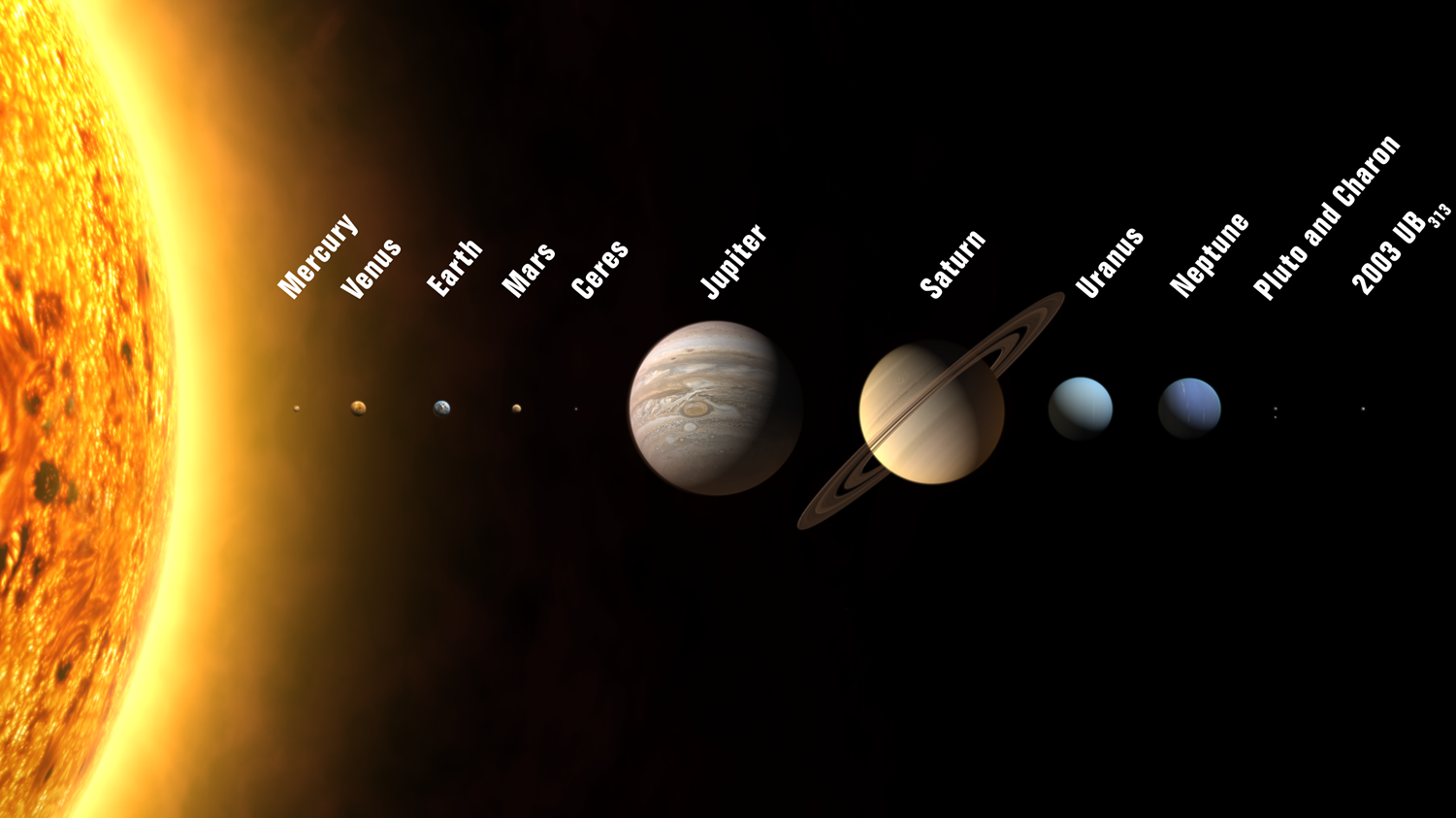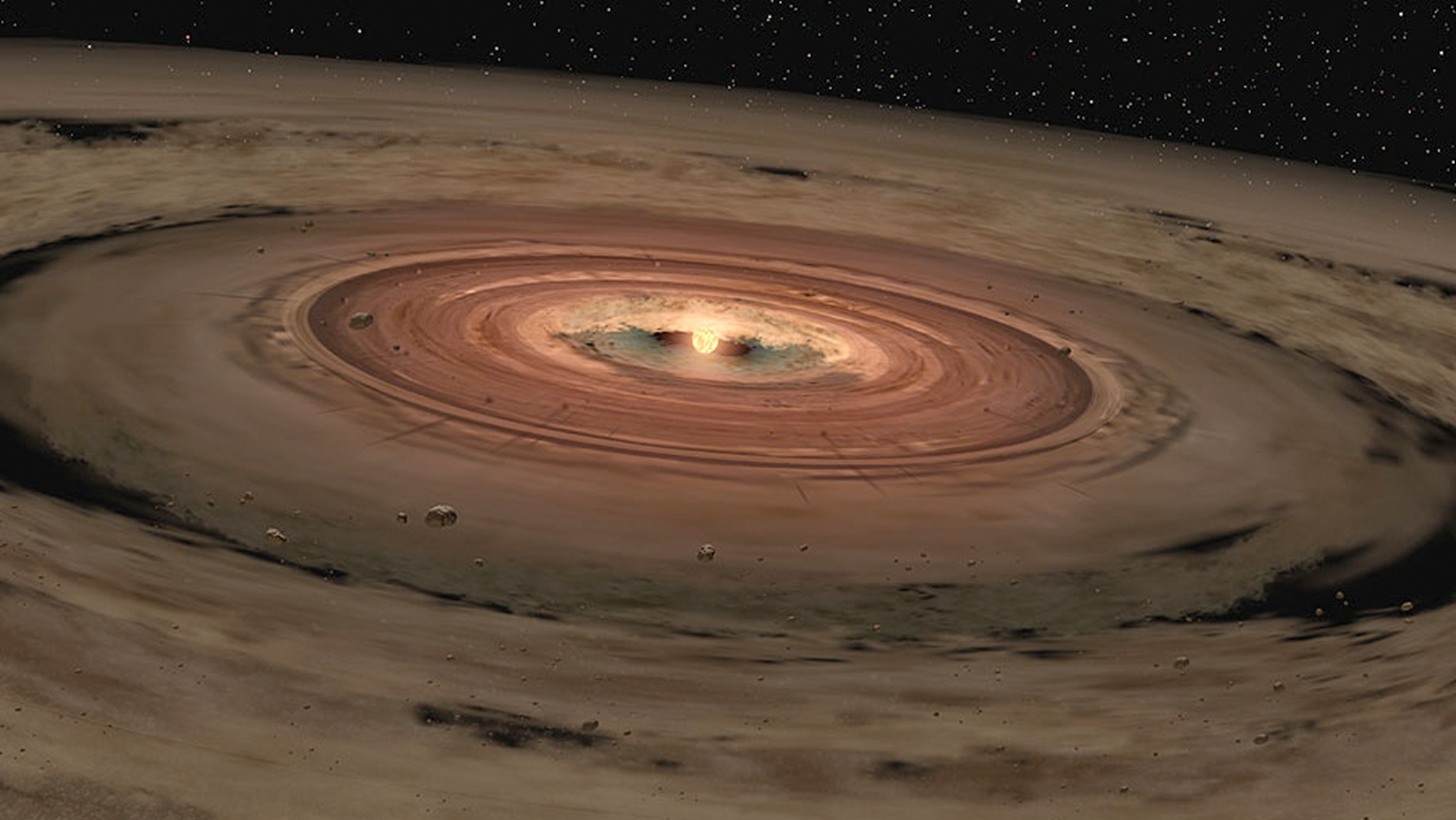PX282 - H1 - planets

image: IAU
- 8 planets in 3 classes
classes
terrestrial
- primarily iron and rock (silicates)
- deficient in volatiles
gas giants
- primarily H/He gas around a rocky/icy core
- rotate rapidly with strong magnetic field
- have a rich system of moons
ice giants
- rocky/icy core surrounded by a thinner H/He envelope
- rotate rapidly with strong magnetic field
- have a rich system of planets
others
- dwarf planets, asteroids, and comets
- mainly found in the asteroid and kuiper belts, and the oort cloud
formation
- all have approximately circular orbits in the same direction in ecliptic plane, aligned with the spin of the sun
- this shared angular momentum led to the nebular hypothesis, which is a natural consequence of conservation of angular momentum during gravitational collapse
- this proposes that the sun and the planets formed together from the gravitational collapse of gas with shared angular momentum

image: NASA/JPL-Caltech/T. Pyle (SSC)
definition of a planet
-
IAU, 2006 set out three criteria that a celestial body must satisfy to be classified as a planet
-
it must be in orbit around the sun
-
it must have sufficient mass for its self-gravity to overcome rigid body forces so that it assumes a hydrostatic equilibrium, basically, must be spherical
-
it must have cleared the neighbourhood around its orbit
-
if only the first two are satisfied, it is called a dwarf planet, eg: pluto, ceres
-
small solar system bodies satisfy just the first criteron, eg: asteroids and comets
-
there are issues with this definities:
- the third criterion has border line cases, even for earth
- does not include exoplanets
- has no upper limit on the size or mass, so stellar companions can be included